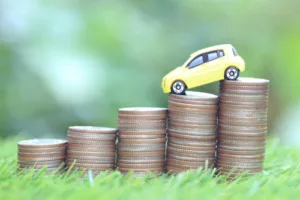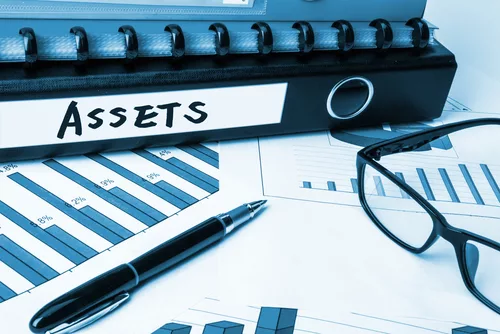- Posted on
- Kortney Murray
- 0
When making business purchases, time should be considered a factor in your decisions. How long will the machinery, equipment, vehicles, and buildings you buy be useful for your business? In this article, we will discover what the useful life of an asset is and how to determine it when it comes to depreciating assets.

Useful Life of Asset Definition
The useful life of an asset refers to the amount of time a tangible asset can be of use for a business. Note that this may include some intangible assets like copyrights, trademarks, or even software. Some tangible assets may have a shorter useful life than others.
For example, an office computer will have a shorter useful life than the table that it sits on. This is because computers can depreciate quickly and new technology evolves quickly, necessitating the purchase of updated equipment. Useful life is not the same as the asset’s physical life.
Oftentimes, the asset can be salvaged after its useful life is up, or it may last even longer than expected. It can also become obsolete or need expensive repairs earlier than expected.
Purpose Of Useful Life Of An Asset
Why do businesses need to know the useful life of an asset? Here are the main reasons:
- It is used to accurately depreciate a business’s tangible assets for IRS tax purposes
- Helps a business estimate how long to keep the asset before it should be replaced
- Helps businesses allocate costs for maintenance and repairs
As we’ve learned in our equipment depreciation guide, depreciation allocates acquisition, installation, and maintenance costs over the equipment’s estimated useful life. The depreciation allows a company to account for the wear and tear on its equipment and to plan for the replacement of that equipment in the future.
The business will subtract the depreciation expense each year from its taxable income during the asset’s useful life. Capital asset depreciation helps spread the initial costs across all relevant accounting periods instead of only applying it to the period of time the asset was purchased.
If the cost is not spread out, this would cause unfairly weighted expenses on the balance sheet for that period. Depreciation schedules need an estimation of the useful life of each asset, measured in years. This estimation allows businesses to write off the expenses of the asset as capital goods purchases.
How to Determine the Useful Life of An Asset
Before figuring out your annual depreciation expenses, you will need to know the useful life to plug into the formula. While there may be pre-determined useful lives of assets in some cases, there are also a variety of factors that can influence the length of the asset’s useful life.
These factors include things like:
- Age of the asset when purchased: If the asset is purchased pre-used, this will need to be factored into the estimate. A significant number of years may need to be subtracted from the useful life estimate.
- Technological advances: If the equipment is part of a quickly evolving industry, it might be a good idea to estimate a shorter life cycle. The duration of its useful life can be changed if early obsolescence has occurred. However, the business is required to clearly explain the situation to the IRS and provide documents comparing the new and old technologies. In some cases, depreciation can be accelerated to shorten the life of the asset.
- Usage patterns: How frequently an asset will be used has a big impact on its useful lifespan. For example, if a salon’s pedicure chair is only used on a once-a-week basis rather than a daily basis, it will undergo a much slower depreciation process and have an extended useful life.
- Working environment: Certain conditions are sure to erode some equipment’s useful life. For instance, living in highly humid areas will cause rust to occur on vehicles, causing their lifespan to shorten in comparison to vehicles in dryer areas.
- Business changes: Over the years, the needs of the business may change. As a result, the use of some equipment may no longer be necessary. This necessitates a shorter useful life for tax purposes.
With so many factors at play, It can be difficult to determine an absolute value when estimating the useful life. If you are unsure how to determine the useful life of the asset, you may be able to find the information in several ways.
Use The IRS Estimate
The simplest way to figure out useful life estimates is to consult the IRS. This IRS publication has a list of many common business assets, along with their useful life estimates. These estimates are often used by businesses to calculate the assets’ depreciation for their taxes.
Additionally, these numbers can help businesses make maintenance and repair decisions. If the asset is nearing its projected asset life listed in this publication, a costly repair may not be an economically viable decision for the business.
Consult Manufacturer’s Estimates
To get more precise estimates, it can be helpful to dig up the manufacturer’s information. The manufacturer should supply data, revealing the asset’s useful life estimate. Since they know their product this can be a much more accurate estimate. However, the estimate they give may not be in years.
It could be estimated in hours or even the number of cycles. Using this data, you will be able to calculate how much usage per day the equipment gets and then estimate how long the life will be.
Refer To Previous Equipment History
Chances are, the business has already used a similar asset previously. If so, the business can prepare a useful life estimate based on the life of the previous asset. How long did the business use the equipment? When did the equipment need repairs, and for what?
How often was maintenance required? Did the useful life extend past or fall short of the manufacturers’ estimates? The answers to these questions can help give a rough estimate, especially if it is made by the same manufacturer. To keep track of this information, businesses use a computerized maintenance management system (CMMS) to collect data.
Later on, this information can be used for other asset management.
Maintenance History
If the business does not upkeep the equipment, this will affect the asset’s useful life. Every piece of equipment is subject to wear and tear; thus it will need to be maintained. Of course, well-maintained business assets will last longer. However, if the asset is not taken care of through preventative maintenance, businesses should estimate a shorter useful life.
And as heavy repairs occur, the estimate should be reconsidered.
Fixed Assets Examples
Here are some common examples of fixed assets that can be depreciated by businesses, as well as their estimation of useful life:
- Cars and automotive equipment: 3-6 years
- Furniture and fixtures: 5-12 years
- Machinery and equipment: 3-20 years
- Property, buildings, and renovations: 10-50 years
For every asset, the end of its useful life will be when the object is expected to become obsolete, needs major repairs, or stops contributing to the profitability of the business. To find out how to depreciate an asset, you will need to be familiar with the various depreciation methods.

How Useful Life is Used in Various Depreciation Methods
There are four commonly used depreciation methods. Useful life is used differently depending on which depreciation method is used. Let’s explore how useful life is used in various depreciation scenarios:
Straight-line Method
This commonly used depreciation method allocates an equal amount of the equipment’s cost for each year of its useful life. This formula is calculated by the cost of the asset subtracted by salvage value or residual value (this is the amount you can sell the item for once it’s past its useful life), then divided by its useful life.
The answer will give the annual depreciation value. Additionally, the straight-line depreciation rate is calculated by dividing 100% by the useful life. With the straight-line depreciation method, an equal amount of depreciation is deducted from the value of an asset for every year of its useful life.
As an example, a business asset purchased for $225,000 with a salvage value of $25,000 and useful life of 4 years, would have a yearly straight-line depreciation value of $50,000.
Declining Balance/Accelerated Method
Some businesses may allocate a larger portion of the cost of an asset in the earlier years of useful life and a smaller portion for later. The yearly write-offs for this method can decline by a set percentage rate to zero. The formula is (Depreciation factor x straight-line depreciation rate) multiplied by the book value at the beginning of the year.
This method can be helpful for businesses that want to recover more of an asset’s upfront value, especially if it loses its value quicker in the first few years of its useful life. For example, let’s say a business purchases an asset for a book value of $575,000 with a salvage value of $5,000 and useful life of 10 years.
You decide you want a 150% accelerated depreciation factor, also expressed as a factor of 1.5. In this case, the calculation would be (1.5 x 10%) $575,000=$86,250 for the first year. For the next year, you would subtract $86,250 from the original book value to get the book value for the second year.
You would then plug that number into the same formula.
Units Of Production Method
This method allocates the cost of the equipment based on how much it is used. It is often used in manufacturing businesses whose machinery use varies from year to year. The cost of the machinery is matched to the revenue that it generates. This is also a helpful method for reflecting the wear and tear of the equipment.
The formula is (asset cost – salvage cost) divided by units produced in its useful life.
The depreciation expense is then calculated by multiplying the actual units of production from the year with the units of production rate. An example would be the purchase of a crane for $7,000. The crane can be salvaged for $700 and is estimated to produce 91,000 units over its useful life of 7 years.
To find the units of production rate: ($7,000-$700)/91,000= .069
You would then multiply that by the actual units produced in the first year. The calculation for the crane’s yearly depreciation expense would be (91,000/7) x .069= $897
Sum-of-the-years’-digits Method
This method is used to allocate more of the original cost to the earlier years, but not as much as the declining balance method. This allows the allocation of a set dollar amount of an asset each year throughout its useful life. The digits for every year of the asset’s useful life will be added together, then divided by the total to get the depreciation percentage.
For example, if the useful life is five years, the sum of years digits (SYD) would be added together as follows: 5+4+3+2+1= 15. The formula is (remaining lifespan/SYD) x (asset cost – salvage value).
As with the declining balance method, the sum-of-the-years’-digits method is best used for an asset that loses value quickly at the beginning of its useful life. The method balances the depreciation expense with the other asset expenses like maintenance and repairs.
An example would be a vehicle purchase used for the business. If the vehicle is $20,000 at the time of purchase and has an estimated $5,000 expenses for future maintenance and repairs, the asset’s total cost would be $25,000. If the useful life is five years and the asset’s salvage value is $2,000, the depreciation expense for the first year would be: (4/15) x ($25,000-$2,000)= $6,133
Knowing Useful Life for Important Business Purchases
The value of the asset is determined by just how long you will be able to use it. For this reason, knowing the useful life of an asset is very important when making business purchases. Keep in mind the asset purchase may also be eligible for Section 179! Consult your CPA if you are unsure what assets will provide the most benefits during tax season.
The next step? Securing funds for your asset purchase through Coastal Kapital!
If You Like Please Share It: